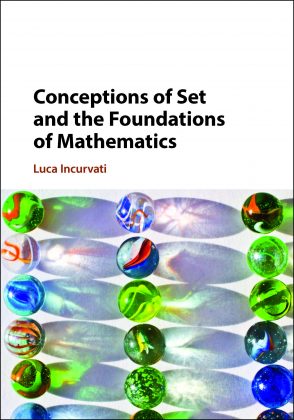Arguing about sets

Sets are ubiquitous and familiar: children get acquainted with sets of objects surrounding them very early on; secondary school students typically encounter sets of natural numbers and sets of real numbers in their maths curriculum. Sets seem very simple: after all, a set seems to be just a collection of objects. Sets are extremely powerful: most if not all ordinary mathematics can be reconstructed using sets, which is why set theory is often thought to provide a foundation for mathematics. But sets must be handled with care. We are used to thinking of sets as sets of objects having a certain characteristic: the set of pears in the basket, the set of people in the room, and so on. It is then tempting to conclude, with the naïve conception of set, that no matter what characteristic we consider, there’s going to be the set of objects with that characteristic.
But what about the set of sets that don’t belong to themselves, Bertrand Russell famously asked? Does the set of those sets belong to itself? If it does, it doesn’t, and if it doesn’t, it does. This is Russell’s Paradox, the simplest of a number of paradoxes affecting naïve set theory, the staggeringly simple system to which the naïve conception gives rise. What to do?
Historically, the mathematical community reacted by developing axiomatic set theory. The system known as Zermelo-Fraenkel set theory eventually emerged as the standard foundation for mathematics, and the so called iterative conception of set gradually came to be regarded as the conception of set lying behind standard set theory. While correct, this oft-told story might suggest that all roads from naïve set theory lead to the iterative conception, and that the rise of Zermelo-Fraenkel set theory as the dominant paradigm was inevitable.
This has always struck me as unfortunate. It makes the conceptual landscape surrounding sets seem much less rich than it in fact is. In my book Conceptions of Set and the Foundations of Mathematics, I examine several alternative conceptions, including the limitation of size conception, the stratified conception and the graph conception. In addition, I discuss attempts to rehabilitate the naïve conception by tinkering with the logic of set theory. These alternative conceptions sanction different set theories, which in turn give different verdicts as to what sets there are. The study of alternative conceptions of set brings into sharp relief the several choice points one is confronted with in the wake of the paradoxes.
So how do we decide which conception of set to favour? In the book, I argue for a methodology I call inference to the best conception. According to this methodology, we should favour the conception which fares better with respect to a certain number of desiderata on conceptions of set. Using inference to the best conception, we can vindicate the central role of the iterative conception in the philosophy of mathematics. At the same time, we should recognize that the desiderata we impose on conceptions of set depend on the goals we take set theory to have, such as, for instance, that of providing a foundation for mathematics. The emerging picture is one where the choice of conceptions is not forced upon us, but depends on our goals and the resulting desiderata. This is compatible with a moderate form of pluralism, according to which different conceptions might be preferable depending on one’s goals.
Conceptions of Set and the Foundations of Mathematics by Luca Incurvati is now available.






